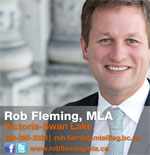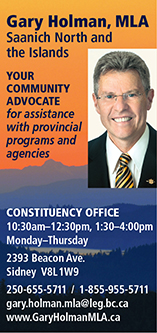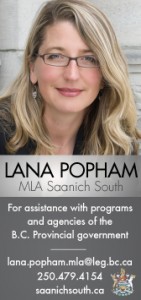Archive for July 2014
Backyard Gardeners On The Peninsula – Part Two
by Ed Johnson
If the name, Anne Freidank, seems familiar it is probably because you have been browsing the vegetables on display at the Fall Saanich Fair. She never fails to garner many awards, and this last year was one of her better showings. Last year she had “seventeen first, seven seconds, three best-in-show, overall most entries and most points in the vegetable department.I was quite surprised. I just love the fair, I have to touch all the animals!”
But Anne performs these miracles from a modest Saanichton backyard, a few raised beds, and a couple of small greenhouses. She grows 30 lb cabbages, six lb onions, and a host of heritage and open pollinated plants to supply her dinner table year around. Religiously saving seeds of all her favourites, she is also always trying new varieties. It would be quite a long list to catalogue all of the current vegetables, herbs and fruits that call her backyard-and even frontyard-home. To say she is passionate about plants, and for that matter, most living things is an understatement. The ups and downs, successes and failures are treated with a deep caring attitude that the observer does not fail to notice. Even the little mason bee is regarded with respect by ridding the cocoons of mites in the fall, and bringing them out from refrigeration in the spring to begin their pollination dance all over again.
That half round dome in the picture above is Anne’s slug trap. A hollowed out shell of a cantaloupe is upturned in the mornings where the little slugs are found. “I hate to kill anything myself so I feed the slugs to the ducks.” Another trick she learned is a way to propagate tomato plants. “Did you know that the part of the plant in the leaf axil that you normally remove in a growing tomato plant can be easily rooted, kept warm overwinter, and come spring planted out for an early crop?”
But it hasn’t always been clear sailing for Anne. One morning looking out the window she was aghast. The entire trellis of kiwis had collapsed on top of a raised bed. On closer inspection she found the supporting timbers had rotted and now there was several hundred pounds of plants and trellises to deal with. The year before she had over 1600 kiwis, but this year there would be none. The vines had to be cut in small pieces and removed – not an easy task for this slight septuagenarian. But that was three years ago and the kiwis have recovered and are on track for another bountiful harvest. Although “I had to hand pollinate the blossoms this year as there did not seem to be any bugs around. Bees do not pollinate kiwis.”
So if you want to try your luck at the Saanich Fair this year and need some tips, give Anne a call. She would love to be part of your success!
To see the entire interview, learn a few gardening tips and a bit of philosophy too, be sure to watch the video.
The Site-C Gamble
by Terry Hand
To build, or not to build the site C dam, that is the question!
For most of us embarking on a major and expensive project usually means we have a good reason for doing so, which brings me to the question, WHY build a dam at all? According to BC Hydro Site C dam will: “provide key benefits for B.C., including energy, dependable capacity and flexibility, regional economic development, job creation, and benefits for communities and Aboriginal groups“. This in itself sounds like a good project and has all the right buzz’ words to keep the average voter happy, but it doesn’t really answer the question of why are we building this dam in the first place?
According to BC Hydro: “our forecasts show demand for electricity will increase by approximately 40 percent during the next 20 years“. Forecast (fore-cast) verb to predict, or estimate (a future event or trend). This sounds to me very similar to gambling, 1) Gamble (gam-ble) verb take risky action in the hope of a desired result. 2) noun an act of gambling; an enterprise undertaken or attempted with a risk of loss and a chance of profit or success.
For about fifteen years retired economist Erik Andersen has been monitoring Hydro’s accounting practices, their financial health and more importantly the cost of electricity to British Columbians. Recently Erik wrote an article which rebukes Hydro’s claim of a 40 percent increased demand for electricity over the next 20 years.
Do we really need more electricity? What should be considered is that BC Hydro (according to the Joint Review Panel), has failed to prove that British Columbia needs the additional energy which site C would generate. Not only that, but the BC Utilities Commission (BCUC) looked into the merits of Site C as a location for hydroelectric generation in 1980 and recommended it be deferred stating, “The commission is not satisfied that Hydro has demonstrated that a 1983 construction start-up date is justified…or that it is preferable to all other sources [of power].” It appears their [BCUC] position has not changed since. More recently the joint review panel stated, “The panel concludes that the proponent has not fully demonstrated the need for the project on the timetable set forth.” The Liberals are not listening. Why?
These points alone relegate a ‘forecast’ of 40 percent increase in power demand, down to that of a ‘gamble’, a 7.9 billion dollar gamble at that. If the same estimation methods which were used on the BC Place roof were also used to estimate the construction of site C there is little doubt the cost will be considerably more than 8 billion dollars; even a 10 percent overrun (not unheard of) would add 790 million to the cost. Then there is the question of interest to consider. The funny thing about interest is, it eats while we sleep. It never stops eating away at the peoples pocketbook.
Sidebar: From the joint review panel: “If ministers are inclined to proceed, they may wish to consider referring the load forecast and demand side management plan details to the BC Utilities Commission.” This is unlikely to happen now since the Liberal government has excluded the BCUC from providing any input into the project process. This is totally unacceptable to British Columbians!
On 26 May 2014, the Peace River Regional District (PRRD) sent a letter to premier Christy Clark and her cabinet, pleading with the Liberal government to have the BCUC review the projects costs and the subsequent impact on ratepayers, before the final decision is made, as this would better serve the public interest.
What are the Liberals trying to hide?
Some media have supported the governments efforts to sell this project to British Columbians by falsely quoting the review panel and by completely ignoring the fact that 3,800 hectares of prime farmland land and forests will be swallowed up. Is there a relationship between the construction of the site C dam and the future demand for water used in fracking wells? Is there a connection between proposed fracking sites and the changes to the ALR? In an article by Dan Potts, “Our energy minister has admitted electricity from Site C is needed for private gas entrepreneurs producing fossil fuel for export and to enable the Alberta oilsands.”
Costs come in many forms and apart from the enormous cost in dollars to the people of BC there are even larger costs in terms of the environment. The area which will be flooded under the proposed construction would flood 5,000 hectares of land, approximately 3,800 hectares of which is some of the most valuable agricultural land in British Columbia. There will be displacement of farmers and Indigenous people in the region. These costs are incalculable and must be considered above and beyond any monetary price tag.
""
The farmland that is about to be submerged will produce food for BC indefinitely and will reduce our dependency on imported food, which supply would surely dry up in the event of some unknown calamity, such as a trucking strike, or other serious event. Weigh this against the fact that a dam has a lifespan of 50 -100 years or even less if mother nature waves her hand, or human error rears its ugly head. It is not difficult to realize that when the life of that dam comes to an end in 50 -100 years we, that is to say you and I, will still be paying for its construction. Then there is the problem and additional cost of removing the dam safely, and what does one do with all that backfill, deteriorated concrete and steel? This article gives more information about hydro including the lifespan of dams, and how dams can impact the environment.
We [people] have an obligation to act as stewards in protecting our natural resources for our children and future generations. We have an inherent responsibility to protect at all cost by making our voices heard on the site C issue. We must postpone or stop this project, and collectively we must look at the many varied alternatives available. Even financially strapped Spain is taking action with alternative energy sources.
We at BC Refed believe that the collective knowledge of all British Columbians can resolve issues such as this through innovation, collaboration and using the knowledge and skills we possess. Look around you, all you see was imagined, designed, built and created not by politicians or CEOs, but by the skills of designers, engineers, scientists, doctors, trades people and labourers. This concept of people power is the very mandate of BC Refed through the process of Direct Democracy -the power of decision is in the hands of the people at all times, not just at election time.
In summary we cannot allow impatient, devil-may-care governments, politicians and profit-hungry corporations to force this upon us, for once that land is submerged, it is irrevocably lost.
Say NO’ to Site C!
Terry Hand is an independent non-commercial writer and member of BC Refed.
The Murky World of BC Lobbyists
by Dermod Travis
Last year, 12,281 registered lobbyists roamed the corridors of power in Washington, D.C. – a city that sees itself as the most powerful in the world.
Comparatively, one would imagine that British Columbia might have a few hundred or so at most. Yet, astonishingly, there were 2,717 registered lobbyists working the political backrooms in B.C. – one for every five in D.C.
Trying to track their influence on provincial politics is a murky undertaking. The industry isn’t just the suits hanging out their shingle because of who they may know or what political favours they may have performed. Today, it includes lawyers, accountants, trade associations, public relations firms and community organizations.
Although far from foolproof, following the money is a little easier.
If the industry has some household names in B.C., Patrick Kinsella is one of them. Since 2005, Kinsella and two of his associated companies have donated $230,506 to the B.C. Liberals and zip to the NDP.
The national firms try to spread it a bit. Hill & Knowlton Canada forked out $72,380 for the Liberals, while Hill & Knowlton Strategies gave $13,450 to the NDP. Earnscliffe B.C. gave $64,136 to the Liberals and Earnscliffe Strategy Group gave $26,145 to the NDP.
Must be something about ‘strategy’ and the NDP that lobbyists see and others don’t.
But they’re just one part of the industry. B.C.’s Registrar of Lobbyists counts 382 organizations with active registrations. And some of them have deep pockets.
The B.C. Road Builders and Heavy Construction Association has donated $129,341 to the B.C. Liberals since 2005, the Canadian Convenience Stores Association $7,600, the International Pharmacists Association coughed up $14,978, and North West Cruiseship Association docked in at $41,493.
The Progressive Contractors Association of Canada, which bills itself as “representing and supporting progressive unionized employers in Canada’s construction industry,” gave $18,200 to the Liberals and, ironically, nada to the NDP. The Canadian Bar Association covered its bases with $600 to the NDP and $1,075 for the Liberals, but the Trial Lawyers Association of B.C. went exclusively with the Liberals to the tune of $34,820.
All in, donors that had “association” in their name gave $3.36 million to the Liberals and $907,000 to the NDP. That’s a lot of membership dues.
Then, for want of a better term, there’s the “LLP” component to the industry – legal and accounting firms – who often have partners or associates that are registered as lobbyists as well. Add all those LLP designations up and another $1.34 million was donated to the Liberals. The NDP pocketed a paltry $89,800.
It seems to pay to be the party in power.
But something else is happening with political fundraising in the province that’s highly worrisome: private, closed-door events where the promises are plentiful and the cover charge ain’t cheap.
Last October, the B.C. Liberal party pocketed close to $100,000 following an exclusive $5,000 a plate dinner with Premier Clark. A registered lobbyist promised the 21 guests a “generous opportunity” to speak with the premier.
On the very day that the party deposited its windfall, it also reported two donations that were conspicuous for no other reason than their dollar amount. Diana Bennett and Scott Menke both cut the party cheques for $5,078. Bennett is the CEO of Paragon Gaming and Menke its president.
Their donations came smack in the middle of the company announcing that it would take another stab at developing an urban casino resort in downtown Vancouver and its controversial hiring of former B.C. Lottery Corporation CEO Michael Graydon to lead that push. One of Paragon’s past in-house lobbyists was former B.C. Lottery Corporation chair T. Richard Turner.
Ever wanted a legitimate reason to scream ‘fore’ at five B.C. cabinet ministers? Up to 60 individuals had the chance, after laying down $1,000 each for a day of golf at the Sagebrush Golf Club in Merritt. A few more ministers and they could have breaked for a cabinet meeting on the 18th hole.
Common thread between most of these high-priced, chummy events? Registered lobbyists buying or selling the tickets.
And it’s that intertwining of lobbyists with a political party’s fundraising apparatus which is troubling, because ultimately both sides risk developing a dependency on keeping the other happy and the money flowing. It rarely ends well.
Dermod Travis is the executive director of IntegrityBC. www.integritybc.ca
History of flight
The BC Aviation Museum chronicles 25 years of operation
by Natasha Caverley
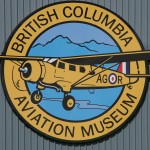 “More than anything else, the sensation [of flying] is one of perfect peace mingled with an excitement that strains every nerve to the utmost ~ if you can conceive of such a combination.” Wilbur Wright (1867—1912), airplane inventor and manufacturer
“More than anything else, the sensation [of flying] is one of perfect peace mingled with an excitement that strains every nerve to the utmost ~ if you can conceive of such a combination.” Wilbur Wright (1867—1912), airplane inventor and manufacturer
Located off Canora Road at the Victoria International Airport in North Saanich, British Columbia (BC), the BC Aviation Museum (BCAM) figuratively serves as a “time machine” where visitors can go back in time to view vintage aircrafts—many of which flew the skies around Greater Victoria. In its 25th year of operation, BCAM remains committed more than ever to the preservation of aircraft and the retention of artifacts and related materials that present BC aviation history to future generations.
Open seven days of week, except for Christmas Day and New Year’s Day, the Museum is a 100% volunteer-operated charitable not-for-profit organization on the Saanich Peninsula—making BCAM one of the few museums in Canada to operate without any paid staff. The Museum’s team is comprised of 85 volunteers led by BC Aviation Museum President John Lewis and his Board of Directors. As a collective, BCAM volunteers assist in preparing and cleaning displays, guiding visitors, working in the BCAM Library, and collecting and restoring aircrafts as well as other aviation artifacts such as log books, medals, photos, books and art that document the history of flight in BC from the years before human flight, military history (World War I—WWI and World War II—WWII) to modern day aircrafts with an emphasis on Vancouver Island aviation.
There are two other aviation museums in BC—one in Comox, that concentrates on the Royal 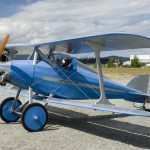 Canadian Air Force (RCAF) and military aviation history, while the Canadian Museum of Flight in Langley, focuses on flying displays of vintage aircraft.
Canadian Air Force (RCAF) and military aviation history, while the Canadian Museum of Flight in Langley, focuses on flying displays of vintage aircraft.
With volunteers like Doug Rollins (Museum Librarian) at your side, you will enter the various hangars at the Museum with a sense that you have, in fact, journeyed back in time—reviewing the diverse set of displays, and learning about the history of aviation in BC and the role that the Pat Bay airfield (now the Victoria International Airport) played during WWII. With much pride and enthusiasm, Rollins explains some of the significant aviation events that shaped the history of flight on the Saanich Peninsula: “Did you know on May 3, 1919, the first recorded flight of an aircraft over the Saanich Peninsula was completed by Pilot Lt. Jack Clemence accompanied by passenger Harry Graves? Lt. Clemence flew a war surplus Curtis JN-4 Canuck Biplane known as a ‘Pathfinder.’ The flight lasted just under an hour, and no landing was completed, but this first event indicated that the age of human flight had come to the area, and pointed to a brighter future.”
For Rollins, a former private pilot and a son of a WWII veteran, volunteering at the BC Aviation Museum provides a sentimental connection and legacy between aviation and his family—“through our collection, one can tell a comprehensive story of military, commercial and private aviation in BC, including gliders, jets, helicopters and piston-powered aircraft…the restoration of BC-based aircrafts is a cornerstone for the BC Aviation Museum where volunteers can spend up to seven years refurbishing and repairing historical aircrafts for subsequent display in one of the Museum’s many hangars.”
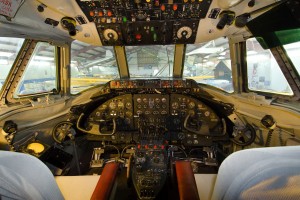
Trans Canada Airlines cockpit (pictures courtesy BCAM)
The Museum enshrines multiple hangars that house notable aircrafts that include, but are not limited to, the Norseman (bush plane), pre-20th Century gliders, a model of the Gibson Twin Plane (the first Canadian-built aircraft to fly in Canada), Eastman E-2 Sea Rover and the Trident Trigull. Also, a gift shop, restoration area, library and multi-purpose room provide other unique dimensions to the Museum.
BCAM volunteers are currently restoring a former BC Government aircraft that was based at the Pat Bay airport in the 1960s which was utilized by the famous “Flyin’ Phil” Garglardi (1913—1995) while he served as the BC Minister of Highways from 1955—1968. BCAM Restorers are also working on a homebuilt aircraft to demonstrate construction techniques as well as preparing several “hands-on” aircraft simulators for visitors—especially kids!
As the BCAM Librarian, Rollins showcases the Museum Library’s extensive collection of over 7,500 individual titles, as well as priceless photographs, visual and audio recordings and archives. The BCAM Library is open to the public for research purposes. Most recently, Rollins and BCAM volunteers are raising funds for the Museum though the sales of surplus BCAM Library materials (e.g., books, models, instruments) on e-Bay.
Rollins remarks on the fact that “…the Museum and its extensive collection of aviation artifacts, that have all been preserved over the past 25 years, were all restored, protected and provided by donations from generous citizens.” The BCAM volunteers typically raise funds for the Museum’s operations by themselves through admission fees, gift shop sales, special events such as the BCAM annual Garage Sale and Open House, renting their facilities for special events and of course, charitable donations of materials and cash from their members and the public at large. Rollins elaborates that “the crowning achievement of the Museum has been the ability of the organization to not just survive, but thrive….When you look at the Museum through the eyes that we have little or no money, what we have accomplished in terms of facilities is truly staggering…Equally, our ability to attract and keep truly talented and dedicated people to volunteer at the BCAM is a success….Many of our aircraft and display items were acquired for little or nothing as they were deemed ‘junk’; however, through the hard work and resourcefulness of our restorers, we have turned them into impressive display pieces.
The BC Aviation Museum is hosting its Annual Open House
Saturday July 26, 2014, 10 am to 4 pm at 1910 Norseman Road, North Saanich
This year’s Open House is dedicated to the 75th anniversary of the Pat Bay airfield. Special exhibits will be presented about the history of the Pat Bay airfield. Special exhibits will be presented – including the display of two vintage aircrafts from the era. For more information about the C Aviation Museum, visit www.bcam.net.
Local government and the Victoria Airport Authority also play a significant role as supporters of the BCAM. For example, the District of North Saanich provides relief from commercial property taxes to the Museum in excess of $10,000.00 annually, while the Town of Sidney has previously donated surplus office equipment to BCAM. Likewise, the Victoria Airport Authority provides the land on the airfield that the BCAM volunteers use for their facilities and assists them in specific projects such as erecting the BCAM sign, and maintaining the Museum’s road and parking lot.
Rollins comments that “a challenge (for the Museum) is making it known to the general public what a truly impressive and interesting place it is…for example, it is not uncommon for us to hear visitors say ‘I’ve lived here my whole life and didn’t know you existed’ or ‘Wow, this is much more impressive than I would have thought. I must tell my friends about this.’”
The 25th anniversary of the BC Aviation Museum not only pays tribute to the history of flight in BC, especially on Vancouver Island, but it is also a testament to the generous citizens and volunteers who donate their time, equipment and funds as collective contributions to sustaining what the Peninsula News Review called “one of the Seven Wonders on the Saanich Peninsula.” In celebration of both the Museum’s 25th anniversary as well as the 75th anniversary of the Victoria International Airport, Rollins and Brad Morrison (Sidney Archives Curator) co-authored a four-part series on the history of the Pat Bay airfield that described the history of the airfield to the end of WWII as well as events that shaped the airfield in the post-war years.
Interesting Saanich Peninsula aviation facts shared by Rollins, Morrison and BCAM volunteers include stories such as:
On October 22, 1939, George Walter Du Temple and Corporal W.S. (Rusty) Hopper landed the first RCAF aircraft on the still incomplete runway of what was to become RCAF Station Pat Bay. With the outbreak of the Pacific War just two years later, Pat Bay suddenly found itself in a strategic position and rapidly grew into the third largest airfield in Canada, accommodating both land and water-born aircraft, with both training and operational squadrons from Britain and Canada.
On March 31, 1948, the RCAF flag was officially taken down and the Pat Bay airport and its facilities were turned over to the Department of Transport. Although the military would remain as tenants for most of its life, the airport could now accommodate the rapidly growing commercial and private aviation sectors. In years following, the Pat Bay Airport (now the Victoria International Airport) would dominate all competing airfields closer to Victoria, and serve as a key economic driver for southern Vancouver Island in a new age of air transport of people and freight.
Do you have interesting stories to share about the history of flight in BC, in particular on the Saanich Peninsula? Please contact Doug Rollins, BCAM Librarian at [email protected].
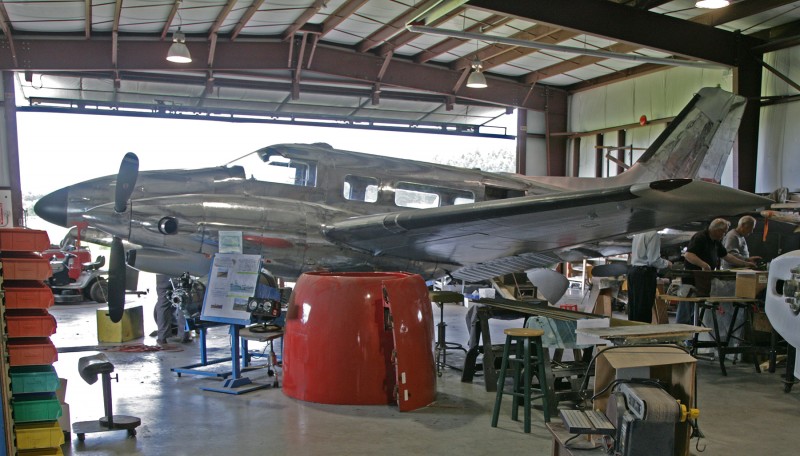
“Flyin’ Phil’s” Plane undergoing refurbishing – (again)





